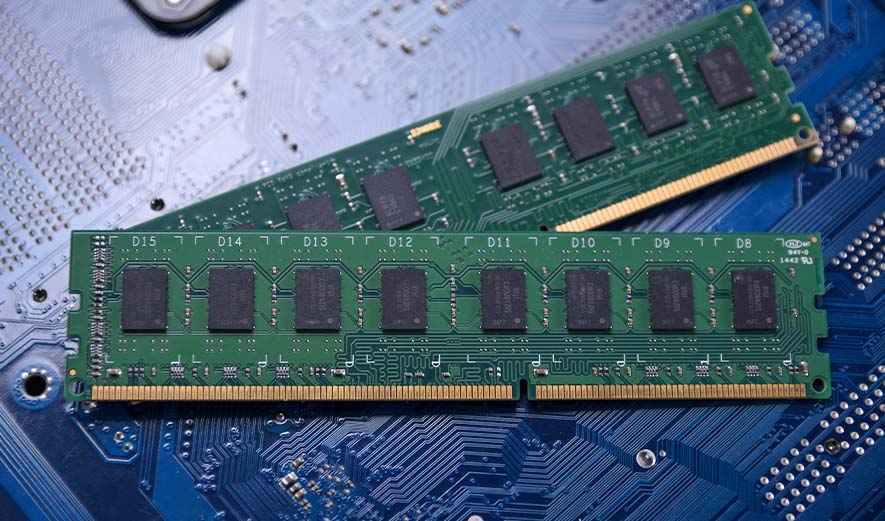Imagine traveling back in time 20 years and telling someone from the manufacturing industry about the challenges your business faces in the future. It’s fun to think about how much or how little they’d understand. Given how the sector’s reliance on technology has increased, how the pandemic has shaped social change and how we’ve adapted to economic circumstances, the same thought exercise could likely be done with an imaginary colleague from only five years ago.
Things are changing faster than ever. And not to sound too alarmist, but the difference between the success and failure of manufacturing businesses is often related to understanding the changes and adapting.
As we begin 2023, looking ahead to the expected trends for the coming 12 months takes on a new level of importance. That’s why we asked Tyron Ball, managing director of Soft Tech, what he sees as the top five tech trends for the fenestration industry and manufacturing overall.
More powerful mobile devices


Can your phone or tablet be more powerful than your computer? Is it possible to conduct business using only apps downloaded onto your devices?
According to Samsung, your phone is now just as reliable, if not more so, than your PC. But what does this mean for your business? And what about network connectivity?
Manufacturers can now use network-agnostic SIM cards that will allow them to connect across the nearest cellular network with the best coverage. The advantage here is that if one network goes down or there’s a lapse in connectivity, the device stays connected through another network. Mobile devices enhance workflow by simplifying processes and eliminating duplicate efforts, such as entering data more than once (a practice rife with potential errors).
However, not all manufacturers are drooling over the advantages of using mobile devices to enhance production. For one, mobile devices are susceptible to the same security risks as PCs and using unsecured Wi-Fi networks may prove to be a boon to hackers and cybercriminals. And who owns these devices? Is the company responsible for providing its workers with cell phones? Who manages these devices? IT teams must be able to handle the added headache of overseeing devices and apps that integrate with back-end systems.
Properly evaluating your company’s needs against the advantages of more powerful and connected mobile devices is the first step before jumping with both feet into the land of mobile devices. Start small, then reevaluate.
But whichever way you choose, Soft Tech offers a solution for your business. More than five years ago, Soft Tech launched the industry’s first mobile-enabled scheduling platform for fabricators, and our development team’s dedication to enabling mobile across applications has only increased since then. This commitment gives our customers the ability to manage production anytime from anywhere using a mobile device.
Artificial intelligence and machine learning


If you’re at all involved in the management of a manufacturing facility—no matter how large or small—you already know about the increasing role artificial intelligence (AI) is playing in the industry.
For years now, AI has been used by manufacturers to make decisions faster and more accurately than a human can. Humbling, perhaps, but the benefits (improved equipment uptime, increased quality and throughput, reduced waste, etc.) are impossible to ignore.
Machine learning, a subset of AI, optimizes processes by incorporating historical data into the operations of systems without being explicitly programmed to do so.
The consulting and design enterprise BilraSoft provides a perfect example of this concept in action: Fanuc, a Japanese automation company, uses robotic workers to operate its factories around-the-clock. The robots can produce essential components for CNCs and motors, run all production floor machinery non-stop and facilitate continuous monitoring of all operations.
Think of it like this: AI integrates data, analyzes it and produces deep insights and predictions that help drive better decision-making across the board. Machine Learning, a subset of AI, crunches huge datasets to spot patterns and trends, then uses them to build models that predict the future.
With AI and machine learning, manufacturers can expect a decrease in lost sales and forecasting errors in addition to continuous monitoring of all operations. They can also look forward to seeing end-to-end visibility of all processes, cost savings, revenue growth and predictive maintenance that reduces unplanned downtime.
To see what this would look like in practical terms, check out Soft Tech’s Automation Module, which gives our customers the ability to set up and configure CNC, milling and saw machines through our Design and Estimation software.
Extended reality and the metaverse


Remember the last demo session you presented over Zoom or Microsoft Teams? Imagine how much more effective that presentation would have been if you could have walked the prospect through a manufacturing facility updated with a comprehensive ERP system, and literally shown them how the system seamlessly manages the flow of business.
There’s no comparison. This is the mind-blowingly realistic user experience that extended reality can provide. While still considered an emerging technology, extended reality combined with the metaverse will unite aspects of the digital and physical worlds to take sales and marketing to a whole new level.
The future of extended reality and the metaverse goes far beyond manufacturing. A 3D collection of virtual worlds inhabited by real people was once the stuff of fantasy, but the possibilities of its practical use are only limited by our imaginations and creativity.
While we may not be connecting dealers with their own avatars in a virtual world quite yet, the principles of better connection through technology are on full display in Soft Tech’s Dealer Module. Empower your dealer network, expand your sales reach, reduce sales cycles and enjoy higher close rates while securely connecting to your manufacturing intelligence. This solution allows dealers to create high-quality custom quotes, quickly and accurately using real-time data.
Renewable energy


We often think about renewable energy in either/or terms: It’s either a moral imperative or an effective cost-cutting measure. The reality is that it can be both. Renewable energy is the key to reducing the cost of electricity and the threat of energy shortages and outages. It also mitigates one of humanity’s most pressing issues, global climate change.
According to a study published by the UN, renewable energy, in all its various forms (sun, wind, water, geothermal heat, etc.), represents the cheapest power option in most parts of the world today. With the demand for electricity expected to grow, solutions ranging from moving factories closer to renewable energy power plants to on-site renewable energy generation are being considered by many companies.
The latter solution—on-site renewable energy generation—is one that Apple has adopted. The mammoth tech company claims it powers 100 percent of its operations in the United States, China and 21 other countries through renewable energy in the form of solar and wind.
According to the Green Energy Becomes Critical for Manufacturing newsletter, proximity to a generating site can create situations in which renewable energy is very competitive: One manufacturing facility in West Texas is drawing some of its power from nearby wind installations and paying a premium of less than five percent to traditional alternatives, in part because its transmission costs are lower.
While it might be unrealistic to suggest smaller manufacturing companies begin generating their own renewable energy onsite, there are practical approaches manufacturers can take to reduce energy consumption. Energy audits, strategically scheduling machinery use, scheduling shut downs and start-ups and optimizing processes will significantly reduce the energy your factory uses.
How can the window, door and glass industries mitigate higher energy costs? Soft Tech, along with contractERP, offers a complete end-to-end ERP system that allows for just-in-time inventory, a decrease in remakes and optimization tools all designed to save energy.
Edge computing


Edge computing has been a manufacturing industry buzz term for several years. With so much excitement for its potential implementation on a factory floor, it’s easy to get lost in the technological terminology that surrounds it. So, what is edge computing?
Put simply, it’s the process of bringing servers and data storage closer to the devices being used to produce the information.
With traditional enterprise computing, the user produces data at a client endpoint (the user’s computer). Then, that data moves across a WAN (the internet) through the corporate LAN (intranet), where an enterprise application stores and uses the data. Then, it all moves back to the user’s device as they work within an application.
With increased automation, the complexity and scale of data has meant that network capabilities can sometimes struggle to keep up. Edge computing keeps things closer to home, improving application performance, reducing bandwidth requirements and offering faster real-time insights. It also grants businesses added autonomy, sovereignty and security over their data.
While edge computing may be a hot trend in 2023, most manufacturing companies are still better suited to using cloud-based computing. With so many employees working remotely or with hybrid arrangements, Soft Tech’s Cloud Hosting enables users to securely work anywhere at any time without the need to invest in specialized hardware, servers and storage devices.
It may seem counterintuitive to refer to champion edge computing as a trend for 2023 and then relate it back to a cloud-based computing system. However, it serves as an important reminder not to get carried away by all the latest fads and trends in the industry.
How to use new tech for your business
When it comes to implementing new technologies, it’s vital to weigh the potential benefits against the potential risks to your company.
Look at the new technology’s scalability. If running production from an iPhone is more trouble than it’s worth, find other ways to improve your processes. Thinking about running your factory off renewable energy sources? Research the efficacy of such a revolutionary shift. What would be the advantages and disadvantages in both the short and long term?
Keep searching, reading and learning, then apply what you discover to scale, improve and grow your business. If you have any questions about that process, feel free to reach out to a Soft Tech representative, who can help you make 2023 the best year yet for your business.
